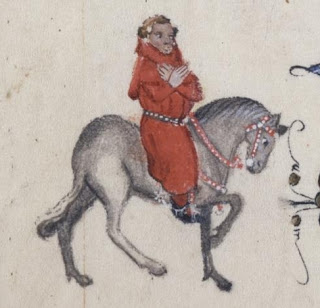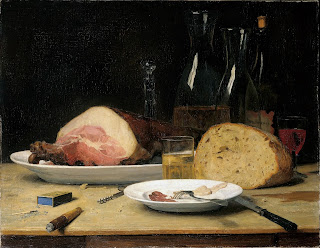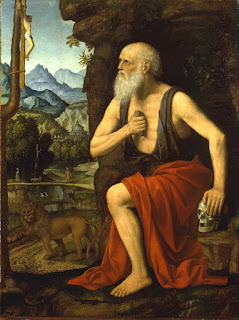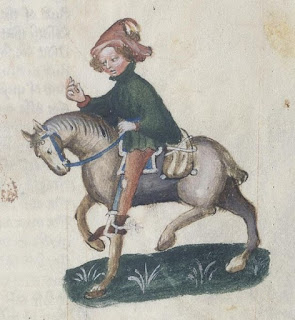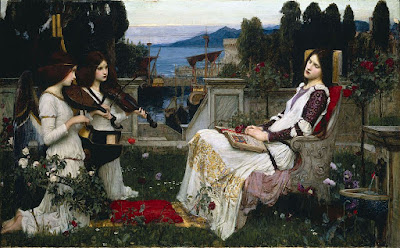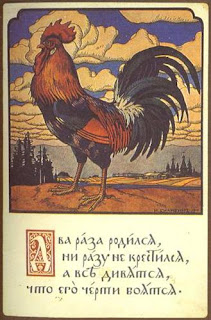When The Manciple’s Tale ends, the party is approaching the edge of a village. The Host declares that they have almost heard a tale from each “social class,” pegs the Parson as someone long-winded and begs a tale of fiction, but the Parson refuses. To tell fiction, one must abandon truth. He will tell a tale based on morality and virtue but, because he’s a Southern man, he does not have the ability to speak in verse, so prose it must be. They all agree to his terms, thinking that a virtuous tale would be a good ending, but the Host begs him to hurry, as the sun is soon to set.
 |
The Triumph of Virtue over Vice (1556)
Paolo Veronese
source Wikiart |
The Parson’s Tale
Part I
The Parson declares that although there are many ways to lead people to Christ, one most noble way is Penitence, and knowing everything about Penitence will do a man good. Penitence is “the lamentation of man who sorrows for his sin and punishes himself because he has done wrong”; yet this penitence must be sincere. His sermon continues, covering the effects and species of Penitence, and what constitutes true Penitence.
With regard to Contrition, there are six causes that move a man to it:
- a man must remember his sins with shame
- sin puts man in greater slavery
- a dread of the “day of doom”
- remembrance of the good that man has failed to do on earth, and the good works that he has lost
- a remembrance of the depth of Christ’s suffering for our sins
- the hope of 1) forgiveness of sin; 2) the gift of grace, and 3) the glory of heaven
Contrition needs the stalwart purpose of confession to destroy the hold of the devil and restore the gifts of the spirit. Sin severs us from communion but confession restores broken bonds.
 |
The Parson’s Tale (1913)
W. Russell Flint
Source |
Part II
Confession is the second part of Penitence, which includes a true revealing of sins to the priest. If a man opens himself to covetousness (concupiscence), he is open to sin. There is either venial sin, in which man loves Christ not as much as he ought, or deadly sin in which man loves something more than Christ. The more a man “burdens his soul with venial sins”, the more likely he is to fall into deadly sin. There are also venial sins which are not so obvious, and the Parson lists those things, such as eating more than is necessary for sustenance, not caring for the sick or the poor, speaking idle words of villainy or folly, slandering your neighbour, etc., etc. No man can avoid venial sins but all men can restrain themselves, or be restored by prayers, confession, good works, and other church traditions.
The Seven Deadly Sins
Pride: Pride is the chief deadly sin, and from it spring all other sins. The Parson lists a number of prideful behaviours, but then introduces another form of pride, a type of self-righteous holiness.
 |
The Seven Deadly Sins & the Four Last Things
Pride {Superbia} (1485)
Hieronymus Bosch
source Wikimedia Commons |
Two manners of Pride exist, one within the heart of man and one without. Pride of outside appearance in clothing is frowned upon, and the Parson appears particularly scandalized at the display of the male member and buttocks in fashion. As for women, one can read their character in their appearance, despite how they may behave. It is not that he eschews decent clothes, only attire that displays the sin of Pride.
Pride can spring from blessings of body or soul, knowledge, good memory, riches, etc., etc. We can hold these things to our detriment or to our profit, depending on how we use them. He also emphasized grace in power, in that a lord should treat his servants well, and warns that he could have fortune one day and captivity the next.
Humility and meekness are remedies against Pride, yet there are three types of humility: humility of heart, humility of mouth, and humility of deeds.
 |
The Seven Deadly Sins & The Four Last Things
Invidia {Envy} (1485)
Hieronymus Bosch
Source Wikimedia Commons |
Envy: A sin of sorrow for others’ wellbeing and a delight in their struggles. Envy springs from malice but there are two kinds of malice: 1) hardness of heart in evil, and; 2) the blindness of man. Envy is loathsome because it is against all virtues and not just one. There are many manners of envy with many sub-categories and the Parson covers every one.
Remedies against envy: 1) love God & your neighbour as yourself and; 2) love your enemy.
 |
The Seven Deadly Sins & the Four Last Things
Anger {Ira} (1485)
Hieronymus Bosch
source Wikimedia Commons |
Anger: Anger arises from Envy which issues from Pride. Augustine describes Anger as a wish to be avenged by word or deed, but the Parson claims that there is a good anger and a bad anger. The good anger is the anger against wickedness, not angry with the man but against the misdeed of the man. Bad anger can be either a sudden anger, or a planned anger, the first a venial sin, the second a deadly sin. Anger destroys spiritual things.
Treating people unfairly, such as charging excess rents or taxes, or withholding care from the poor is, interestingly, called homicide, for “unless thou feedest him, thou slayest him.” Do not swear, or lie, or flatter, or reproach, or sow discord, etc. There are copious examples and sub-examples of anger, which go on for a looooong time.
The remedy for anger is humility, or meekness, and patience, or suffering.
 |
The Seven Deady Sins & The Four Last Things
Sloth {Accidia} (1485)
Hieronymus Bosch
source Wikimedia Commons |
Sloth: This sin makes a man “heavy, thoughtful and fretful,” and prevents him from doing good works. Sloth is soooo delicate and careless that he cannot tolerate any firmness or punishment, so therefore everything one does comes to naught. “Wanhope” is a type of sloth that comes from despair in the goodness of Christ, thinking that one is too sinful for his forgiveness, culminating in defeat. Next is idleness, which opens the door to other sins such as evil thoughts, gossip, etc. Tardiness follows, where a man thinks that he has all the time in the world to return to God, and lastly, laziness. A lazy man will do a poor job and stint on his work, if he comes upon difficulty or becomes frustrated.
The remedy for sloth is building up a fortitude to abhor destructive behaviours and things. The species of fortitude are: 1) magnaminity, or great valor; 2) faith and hope in God and his saints; 3) security and self-confidence; 4) magnificence, and; 5) constancy.
 |
The Seven Deadly Sins & The Four Last Things
Avarice {Avaricia} (1485)
Hieronymus Bosch
source Wikimedia Commons |
Avarice: Avarice is the root of all evil because it seeks wordly things instead of heavenly things. Greed is not only an inordinate desire for material goods, but for knowledge, fame, etc. It is coveting things you do not have, but also keeping things that you do not truly need. The greedy man has more hope in his possessions than in Christ, and his desires put him in bondage. Thus follows extreme detail on bondage.
Mercy and pity, relieve the sin of avarice. Reasonable generosity is also a remedy.
 |
The Seven Deadly Sins and The Four Last Things
Gluttony {Gula} (1485)
Hieronymus Bosch
source Wikimedia Commons |
Gluttony: The overindulgence in food or drink, where a man makes his belly, his god. Drunkenness begets loss of reason. Otherwise all his descriptions of gluttony sound startlingly like the manner in which we eat nowadays.
- Eating before it is time to eat
- Eating too delicate food and drink
- Eating more food than is necessary
- Elaborate adornment and preparation of food
- Eating too greedily
The remedy of gluttony is abstinence, along with its fellow-remedies of temperance, shame, satisfaction, moderation, soberness, and frugality.
 |
The Seven Deadly Sins and the Four Last Things
Lechery {Luxuria} (1485)
Hieronymus Bosch
source Wikipedia Commons |
Lechery: A cousin to gluttony is the sin of lechery, or lust. Adultery is a “stinking sin”, where not only the deed is forbidden, but the desire also. By this sin, the devil wins most of the world. Do not:
- Look, for “the desire of the eyes, follow the desire of the heart.”
- Touch
- Use foul words
- Kiss
- Act lecherously
A precise description of all levels of lechery follows.
To remedy this sin, one must employ chastity and continence (self-control). True marriage makes two hearts united, as well as bodies. A man should be patient with his wife and revere her. Woman is subject to man, but a man should love his wife so much that he would die for her. Other remedies are (get ready!) the withdrawal of ease, withdrawal of eating and drinking, sleeping long and in great quiet, and shunning that by which he/she is tempted.
The Parson declares that it is good to understand the circumstances which provoke sin, and gives us, again, numerous examples. The more one sins, the easier it is to sin, and the more adverse one is to confessing them.
For a man to make a sincere confession, it must be with: 1) a sense of shame; 2) a humility in confession; 3) a presence of tears, if not in the eyes, then in the heart; 4) no hesitation for feeling shame, and; 5) an obedience to accept the penance dealt out. A confession also must be hastily sought, of free will, lawful, free of lies, and have no hypocrisy.
Communion should be taken at least once per year, because everything renews itself annually.
Part III
The third part of Penitence is Satisfaction, which involves alms and bodily pain.
Of alms, there are three types: 1) contrition of the heart; 2) pity on the sins of his neighbours, and; 3) giving to those in need, such things as counsel, comfort, food and drink, clothing, lodging, etc.
Concerning bodily pain, it consists of prayers, fasting, keeping vigil and the teaching of orisons. One may not think these things very painful, but the Parson seems to be referring to the pain of discipline and self-control …… doing things we perhaps do not wish to do for the good of ourselves or others. He mentions having discipline in the case of being whipped, in tribulations, sickness, in the loss of a wife or child, or worldly possessions.
He covers the consequences of not making a sincere confession, and other things that impede confession.
The fruit of penance is the bliss of heaven.
 |
The Parson’s Tale (1913)
W. Russell Flint
source |
I must say that in simply reading this sermon, I clearly understood penance and bodily pain. Could this have been the Parson’s purpose? This tale was sooooooo long, so detailed, and it read like a legal brief, without say, any dry Ciceronian wit. I actually quite loved it for the first half, but soon it was just too much, and I admit that I was glad when it ended. Yet for all that, it had some very good points.
I must say I quite liked how some of the church Fathers explained hell:
“To wretched caitiffs shall be death without death, and end without end, and lack without end. For their death shall always live, and their end shall evermore begin, and their lack shall not cease.” Saint Gregory
“They shall follow death, and they shall not find him; and they shall desire to die, and death shall flee from them.” John the Evangelist
I was surprised at the emphasis placed on the order of things Reason is also highlighted. Each sin is explained in copious detail, yet the Parson shows expert insight into human nature, and his words are often convicting. His advocation includes compassion, grace, lords to treat their servants well, as well as admonishing “unworthy priests and ignorant curates,” so much of his talk was edifying. However, looking at this tale from a non-Catholic viewpoint, the heavy emphasis on penance and sin became startling, not necessarily for the content, but for the length. Jesus came to take men’s sin on himself, and we are saved by grace, yet I think the Parson loses much of that in his worldview. Certainly we should be aware of everything that he touched on, and confession and repentance are necessary, but the fear and the shame that comes with it are out of my scope of understanding.
The Parson’s Tale is the last of the tales before the final Chaucer’s Retraction, and is perhaps very fitting in its placement. The characters are going on a pilgrimage, each probably ruminating on their lives and the different paths they have taken or would like to take. The Parson gives them a nudge, with his sermon, on the path of salvation. He also, with great acumen, touches on a number of sins that plague his fellow travellers, giving them a way to escape them if they so choose.










